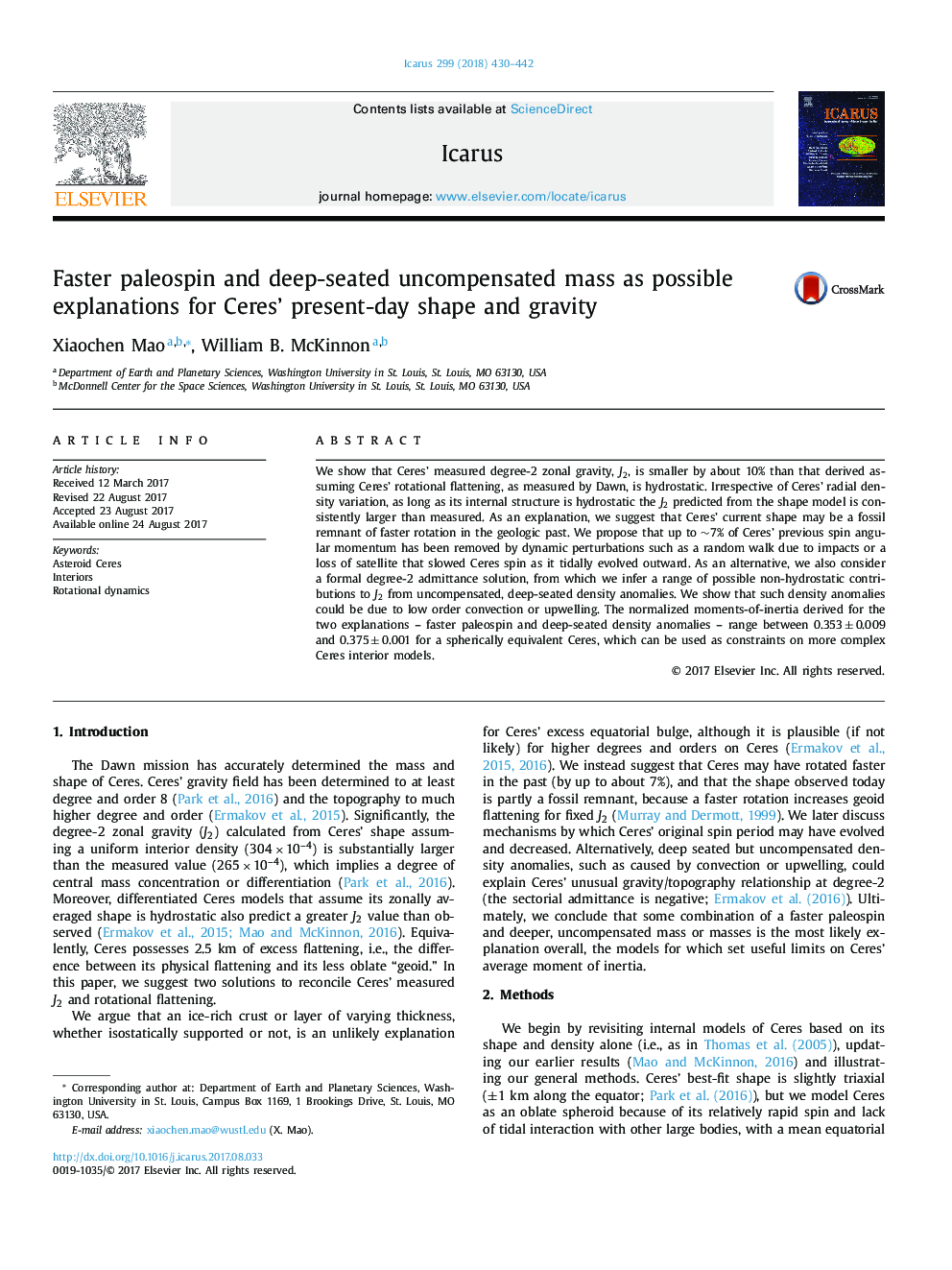| کد مقاله | کد نشریه | سال انتشار | مقاله انگلیسی | نسخه تمام متن |
|---|---|---|---|---|
| 5487240 | 1523492 | 2018 | 13 صفحه PDF | دانلود رایگان |
عنوان انگلیسی مقاله ISI
Faster paleospin and deep-seated uncompensated mass as possible explanations for Ceres' present-day shape and gravity
ترجمه فارسی عنوان
توده فلوئوسپن سریعتر و جرم غیرمتمرکز عمیق به عنوان توضیحات احتمالی برای شکل و گرایش فعلی سرس
دانلود مقاله + سفارش ترجمه
دانلود مقاله ISI انگلیسی
رایگان برای ایرانیان
کلمات کلیدی
سیستر سدر، فضای داخلی، دینامیک چرخشی،
موضوعات مرتبط
مهندسی و علوم پایه
علوم زمین و سیارات
علوم فضا و نجوم
چکیده انگلیسی
We show that Ceres' measured degree-2 zonal gravity, J2, is smaller by about 10% than that derived assuming Ceres' rotational flattening, as measured by Dawn, is hydrostatic. Irrespective of Ceres' radial density variation, as long as its internal structure is hydrostatic the J2 predicted from the shape model is consistently larger than measured. As an explanation, we suggest that Ceres' current shape may be a fossil remnant of faster rotation in the geologic past. We propose that up to â¼7% of Ceres' previous spin angular momentum has been removed by dynamic perturbations such as a random walk due to impacts or a loss of satellite that slowed Ceres spin as it tidally evolved outward. As an alternative, we also consider a formal degree-2 admittance solution, from which we infer a range of possible non-hydrostatic contributions to J2 from uncompensated, deep-seated density anomalies. We show that such density anomalies could be due to low order convection or upwelling. The normalized moments-of-inertia derived for the two explanations - faster paleospin and deep-seated density anomalies - range between 0.353â¯Â±â¯0.009 and 0.375â¯Â±â¯0.001 for a spherically equivalent Ceres, which can be used as constraints on more complex Ceres interior models.
ناشر
Database: Elsevier - ScienceDirect (ساینس دایرکت)
Journal: Icarus - Volume 299, 1 January 2018, Pages 430-442
Journal: Icarus - Volume 299, 1 January 2018, Pages 430-442
نویسندگان
Xiaochen Mao, William B. McKinnon,
